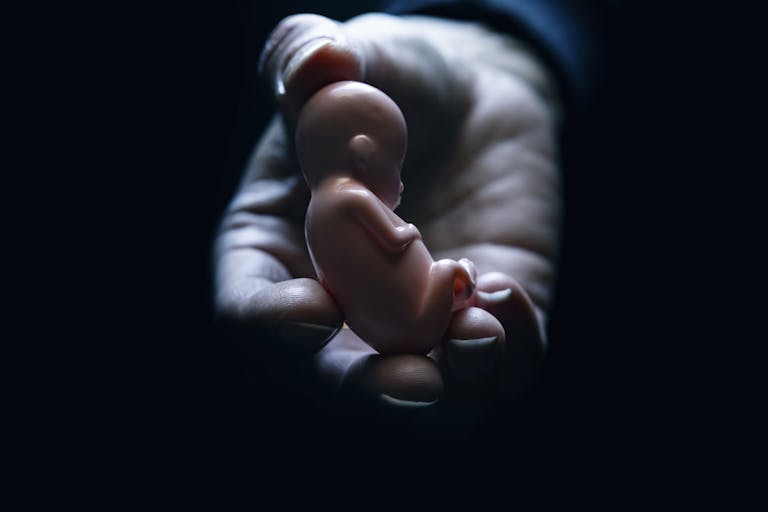
Is picking the 'best' embryo a mere parenting tool, or eugenics fueled by hubris?
Nancy Flanders
·
Over 700 patients get $56m settlement from IVF business after embryos destroyed
A screening test used on embryos, which was once hailed as an “exciting” step forward in the billion-dollar fertility industry, has led to a class action lawsuit and $56 million settlement against one Australian fertility business. The settlement, in which the company did not admit liability in the destruction of healthy embryos, was reached with more than 700 former patients.
The class action against Monash IVF, one of Australia’s largest IVF clinics, claimed that 35% of the embryos determined to be abnormal by non-invasive preimplantation genetic testing (NiPGT) may have been healthy and viable. The potentially false-positive results led to the destruction of embryos who had been deemed abnormal based on the data from faulty genetic testing — leaving parents devastated, much like those involved in a recent Alabama lawsuit.
The lead plaintiff in the case, Danielle Bopping, who is in her 40s, was told by Monash IVF that her last remaining embryo was found to be abnormal… only to later be told the embryo may actually have been viable. Similar situations occurred for the other patients who had embryos tested at the clinic between May 2019 and October 2020. The class action also claimed that Monash IVF employees doctored the results of a clinical trial, forged patient signatures on consent forms, and burned documents to cover for themselves.
WATCH: What is the pro-life concern about IVF, and why?
NiPGT had been seen as a potential future “gold standard” for weeding out embryos that are deemed unviable during in vitro fertilization. For years, the industry has used preimplantation genetic testing (PGT), which involves a biopsy of the embryo — a risky and potentially dangerous test for the embryo. In 2020, VitroLife, a worldwide IVF business, said it was looking forward to Monash IVF’s work with NiPGT:
If possible and accurate, non-invasive testing would make routine PGT-A much more feasible in already busy embryology labs. Excitingly, the answer to this question for Monash IVF, Adelaide, Australia, using their own in house validation was resoundingly positive with 95% concordance with biopsy samples for whole chromosome aneuploidy. So, in May last year they became the first group of clinics world-wide to offer niPGT-A as a clinical service. We look forward to future publications on clinical outcomes using their methodology.
But the class action suit claimed Monash IVF was lying when it said its NiPGT testing aligned 95% with the standard PGT biopsy testing, and argued that the company doctored the results of a clinical trial. While Monash IVF told patients that the results of PGT and NiPGT were indistinguishable 95% of the time, it had to eventually admit that the (now-suspended) NiPGT testing results only matched the invasive testing results 75% to 85% of the time.
“We … hope that this case helps to draw attention to the fact that IVF in Australia has become a multimillion-dollar industry, which does not always put the best interests of its patients first,” Bopping said.
It remains unclear if any U.S. fertility companies used NiPGT to test embryos, but in 2023, research published by the Fertility and Sterility journal claimed, “Noninvasive and minimally invasive preimplantation genetic testing for aneuploidy … is a tool that may one day become the gold standard for embryonic chromosomal screening. Compared with traditional PGT-A, which removes cells from the trophectoderm (TE), noninvasive PGT-A (niPGT-A) focuses on the use of spent blastocyst media (SBM), whereas miPGT-A uses blastocoel fluid (BF).”
Article continues below
Dear Reader,
In 2026, Live Action is heading straight where the battle is fiercest: college campuses.
We have a bold initiative to establish 100 Live Action campus chapters within the next year, and your partnership will make it a success!
Your support today will help train and equip young leaders, bring Live Action’s educational content into academic environments, host on-campus events and debates, and empower students to challenge the pro-abortion status quo with truth and compassion.
Invest in pro-life grassroots outreach and cultural formation with your DOUBLED year-end gift!
Likewise, San Francisco fertility doctor, Vanessa Julaton, said in 2022, “When I first started doing IVF, most labs were doing Day 3 embryo biopsies, and we had to take 1/8th of the genetic material of the embryo to send away for testing. Now, we as a field are exploring the possibility of non-invasive PGT (niPGT-a) where we won’t have to biopsy the embryo at all, but instead, we can tell the genetics of each embryo from sampling the culture media that the embryo grows in. This scientific advancement is incredible to me, and the idea that we won’t have to biopsy the embryo at all is so exciting!”
There was clearly a great deal of hope placed on NiPGT, but it appears most U.S. companies had not switched to the method prior to the Monash IVF lawsuit.

NiPGT seems to have been created in an effort to simplify the testing process and perhaps lower facility costs, but its inaccuracy led to the destruction of additional lives. In that way, it’s similar to noninvasive prenatal testing (NIPT), which has a highly inaccurate rate of accuracy in diagnosing health conditions in preborn children.
The New York Times reported two years ago that certain NIPTs are wrong up to 93% of the time. Yet they were marketed as “highly accurate” and “reliable.” This has major implications, given the fact that families have frequently reported experiencing pressure to abort after receiving a prenatal diagnosis for a child.
In Ireland, based on initial test results indicating their child may have a genetic health condition, a couple chose abortion. After they had already killed their child for not being perfect, another test result indicated that their child was healthy.
According to a 2014 study, 6% of babies who had a “positive” screening test result for a health condition were aborted without their parents undergoing a test to confirm the diagnosis, such as an amniocentesis — the invasive testing that carries the risk of miscarriage but is far more accurate.
Screening preborn children for health conditions should not be a way to target them for destruction in the lab or abortion at Planned Parenthood. To do so is eugenic. It should be used to find the best way to treat them and give them the best quality of life possible.
Live Action News is pro-life news and commentary from a pro-life perspective.
Contact editor@liveaction.org for questions, corrections, or if you are seeking permission to reprint any Live Action News content.
Guest Articles: To submit a guest article to Live Action News, email editor@liveaction.org with an attached Word document of 800-1000 words. Please also attach any photos relevant to your submission if applicable. If your submission is accepted for publication, you will be notified within three weeks. Guest articles are not compensated (see our Open License Agreement). Thank you for your interest in Live Action News!

Nancy Flanders
·
Politics
Cassy Cooke
·
Guest Column
Right to Life UK
·
Issues
Angeline Tan
·
Issues
Bridget Sielicki
·
Issues
Nancy Flanders
·
Analysis
Nancy Flanders
·
Politics
Nancy Flanders
·
Activism
Nancy Flanders
·
Issues
Nancy Flanders
·
Human Interest
Nancy Flanders
·